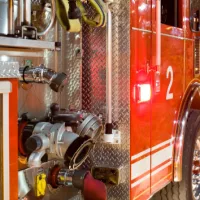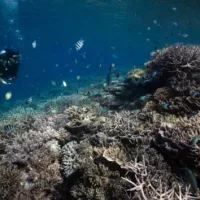
narvikk/iStock(NEW YORK) — Countries around the world are scrambling to respond to the influx of new coronavirus cases outside of China.
Here is how the situation is unfolding. (Please refresh for updates.)
Noon ET — Stock markets continue plunge
U.S. equities markets continued plummeting on Friday, with the Dow Jones Industrial Average suffering its worst week since the financial crash of 2008, down more than 3,500 points since Monday.
At midday, the DOW had fallen more than 10% for the week, as the S&P 500 and Nasdaq similarly tumbled.
11:49 a.m. ET — Gov. Cuomo: ‘Virtually inevitable’ that someone will test positive in New York
It’s “virtually inevitable” that someone in the New York state will test positive for novel coronavirus, Gov. Andrew Cuomo said at a Friday news conference.
There’s currently one individual in New York City who recently traveled to Italy and whose COVID-19 test is pending.
“Tens of thousands of people have already tested positive in different countries,” he said. “I don’t give a darn about anybody’s politics, we have to be ready.”
Cuomo has assured Vice President Mike Pence, who is leading the United States’ coronavirus response, that New York is capable of conducting its own coronavirus testing. Currently the state is sending its diagnostic tests to the CDC in Atlanta to be processed.
11:18 a.m. WHO raises global risk from “high” to “very high”
The World Health Organization upgraded its global risk assessment of the novel coronavirus’ potential for spread and impact from “high” to “very high,” WHO Director General Dr. Tedros Adhanom Ghebreyesus, announced at a Friday news conference in Geneva.
While the designation is the WHO’s highest possible alert level, Dr. Tedros specifically did not call the virus a pandemic, noting that “we do not see evidence yet that the virus is spreading freely in communities.”
Dr. Mike Ryan, executive director of WHO’s Health Emergencies Program warned that calling COVID-19 a pandemic prematurely would be “essentially accepting that every human on the planet will be exposed to the virus.” If countries take the containment measures necessary to break the virus’ transmission, “that does not need to be the history of this event,” Ryan said.
Dr. Tedros urged people around the world to follow steps to avoid disease transmission, like hand washing, avoiding traveling while sick and seeking care immediately upon feeling ill. Those over 60 years old, or who have underlying health issues, may wish to take added precautions, like avoiding crowded spaces and not interacting with people who are sick.
There is no treatment for COVID-10, but there are more than 20 vaccines being developed in countries around the world and several therapeutics in clinical trials. While a potential vaccine is more than a year away from being available, the WHO expects to see results from clinical trials for treatments in the next few weeks.
9:45 a.m. Japan reports two additional Diamond Princess cruise ship deaths
Two more patients who had been passengers on the Diamond Princess cruise ship died, Japan’s Ministry of Health, Labor and Welfare reported Friday. The individuals, a British man and a Japanese woman, are the fifth and sixth passengers to die from COVID-19 after being aboard the quarantined cruise ship.
Earlier
The U.S. Food and Drug Administration said it has been alerted to the first manufacturing shortage of an unnamed drug due to the deadly novel coronavirus outbreak that began in China and has now reached the U.S.
FDA Commissioner Stephen Hahn said the agency has been “closely monitoring” the medical product supply chain “with the expectation” that the outbreak of the novel coronavirus would “likely” have an impact.
“A manufacturer has alerted us to a shortage of a human drug that was recently added to the drug shortages list,” Hahn said in a statement Thursday night. “The manufacturer just notified us that this shortage is related to a site affected by coronavirus. The shortage is due to an issue with manufacturing of an active pharmaceutical ingredient used in the drug.”
“It is important to note that there are other alternatives that can be used by patients,” he added. “We are working with the manufacturer as well as other manufacturers to mitigate the shortage. We will do everything possible to mitigate the shortage.”
Hahn said the issue continues to be “an evolving and very dynamic” one.
The newly identified virus, known officially as COVID-19, emerged in the Chinese city of Wuhan last December and has since spread overseas to at least 46 other nations, with South Korea, Italy and Iran seeing recent surges in case numbers. The World Health Organization, which has declared the outbreak a global health emergency and said the virus has “pandemic potential,” recorded more than 82,000 confirmed infections globally by Thursday. More than 95% of those cases were in China.
At least 2,804 people have died from the virus, according to the latest data from the WHO.
South Korea has the second-highest national total of coronavirus cases behind China. Of the more than 81,000 people tested in the country, 2,337 had tested positive for COVID-19 as of Friday afternoon — up 571 from the same time the previous day. More than 30,000 others were awaiting test results, according to South Korea’s Centers for Disease Control and Prevention.
“It is hard to say, at this point, when the outbreak will reach its peak here,” the agency’s vice director, Kwon Jun-wook, said at a press briefing Friday.
A majority of the cases in South Korea have been linked to a secretive religious sect in the city of Daegu. More confirmed cases are expected this weekend among members of the Shincheonji Church of Jesus.
Japan has the third-highest national total, when including the hundreds of confirmed cases related to the Diamond Princess cruise ship.
The cruise ship has been quarantined at Yokohama port since Feb. 5 and at least 705 people who were on board have tested positive for COVID-19. Six passengers have died, including a British man whose death was confirmed Friday, according to Japan’s Ministry of Health, Labor and Welfare.
All those who have been infected were brought ashore for treatment, while the rest were confined to their rooms until the quarantine period ends. Passengers who have tested negative for the virus disembarked the ship last week.
Beyond the cruise ship, an additional 186 cases have been confirmed in Japan, according to the WHO.
So far in the United States, 60 people have been diagnosed with the disease. The majority of the cases are Americans who were on board the Diamond Princess cruise ship that was placed under quarantine in Japanese waters as hundreds of passengers became infected with the new coronavirus.
The newest case is being investigated by the U.S. Centers for Disease Control and Prevention as possibly the first instance of “community spread” on American soil.
The patient, who is a resident of California’s Solano County, had no known exposure to the virus through travel or close contact with a known infected individual, according to the California Department of Public Health. The individual was transferred to UC Davis Medical Center in Sacramento on Wednesday, the hospital confirmed.
It’s the first COVID-19 case of unknown origin in the U.S., indicating there could be “community spread,” which means the virus is circulating among the local community and infecting people, including some who are not sure how or where they became infected, according to the CDC.
The CDC said it would continue to investigate the source of the infection. It’s “possible” that the individual “may have been exposed to a returned traveler who was infected,” an agency official said in a statement Wednesday.
The Chinese government has imposed severe restrictions on virus-hit areas, including a lockdown on the city of Wuhan. The United States, among many other nations, has put in place strict travel restrictions on people who have recently visited China.
The FDA said Thursday that it is “not aware of any reports at this time of human illnesses that suggest COVID-19 can be transmitted by food or food packaging.”
COVID-19 causes symptoms similar to pneumonia, ranging from the mild, such as a slight cough, to the more severe, including fever and difficulty breathing, according to the CDC. There is no vaccine yet for the virus.
Meanwhile, a whistleblower within the U.S. Department of Health and Human Services has filed a complaint alleging that more than a dozen workers were sent to receive the first Americans repatriated from Wuhan, China, without proper training or protective gear for coronavirus infection control. The complaint, filed to the U.S. Office of Special Counsel, was first reported by The Washington Post on Thursday.
ABC News has not reviewed the complaint and lawyers representing the whistleblower have refused to provide it. Ari Wilkenfeld, one of the whistleblower’s attorneys, told ABC News that The Washington Post article accurately describes the allegations laid out in the complaint. “We are hopeful that Congress and the OSC will investigate this case in a timely and comprehensive manner,” Wilkenfeld told ABC News in a statement. “This matter concerns HHS’s response to the coronavirus, and its failure to protect its employees and potentially the public. The retaliatory efforts to intimidate and silence our client must be opposed.”
Moreover, a spokesperson for the U.S. Office of Special Counsel confirmed to ABC News that it has received the whistleblower’s complaint as described in The Washington Post and that the case has been assigned.
When asked for comment, U.S. Department of Health and Human Services spokesperson Caitlin Oakley told ABC News: “We take all whistleblower complaints very seriously and are providing the complainant all appropriate protections under the Whistleblower Protection Act. We are evaluating the complaint and have nothing further to add at this time.”
Copyright © 2020, ABC Audio. All rights reserved.















